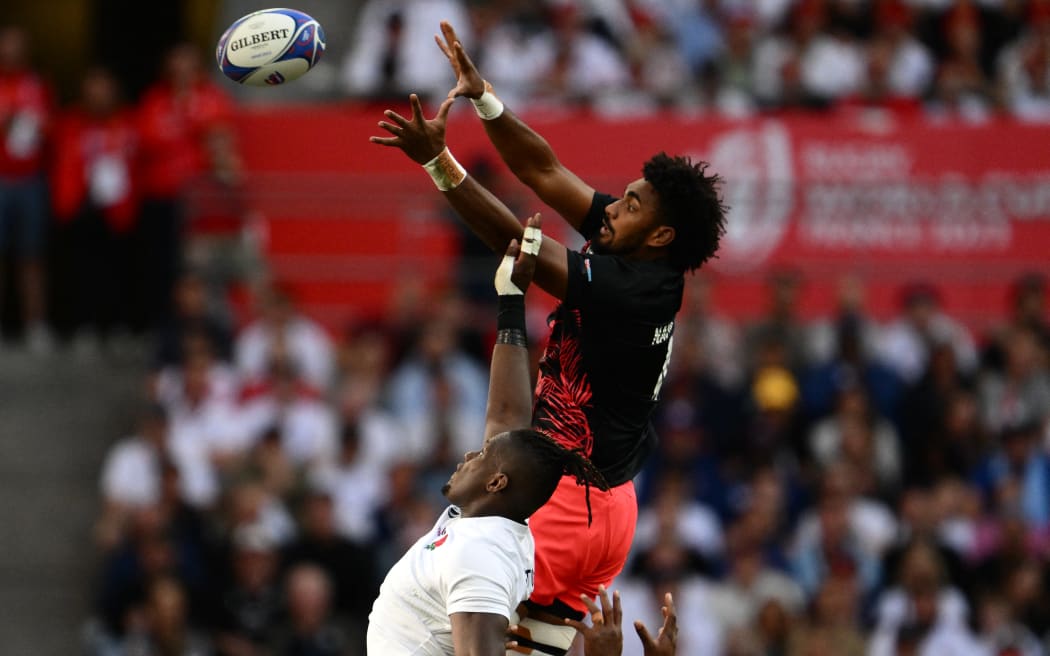
Fiji's lock Isoa Nasilasila and England's lock Maro Itoje jump for the ball in a line out during the France 2023 Rugby World Cup quarter-final match in Marseille. Photo: AFP
Analysis - The Pacific three of Fiji, Samoa and Tonga have returned home from the Rugby World Cup.
With so many good players in their different squads there were a lot of silent hopes that they would end up in the last eight play-offs - at least two of them.
That was not to be as in the end it was only Fiji, who carried the Pacific's hopes into the last eight in France, a feat the Flying Fijians had also achieved 16 years ago.
That they lost to England at the Stade de Marseille, at the same ground where they had lost to South Africa in the quarterfinals at the 2007 event, is now a part of the 2023 history.
No one can doubt now what the three teams are capable of doing on the field.
Fiji had Wales and Australia - both Tier 1 nations - plus fellow Tier 2 countries Georgia and Portugal in Pool C.
They started strong against Wales and if not for some calls from the ref and his team as well as some indecision on the Fijians' part they could have won the opening pool game in Bordeaux.
But they returned to beat the Wallabies in one of the biggest upsets at the event, pushed hard by Georgia in their close win and went down by a point in a shock loss to a determined Portugal to qualify for the last eight.
Samoa started with a good win over Chile in Pool D - a scrappy game but managed to get in at the end.
Then they struggled against both Argentina and Japan after putting themselves under pressure because of their own mistakes, losing the games they needed to win.
Then a tough clash against England in their farewell game in Lille, losing by a single point after throwing everything into the match.
It was to be their best game in the tournament and as coach Chief Mapusua said was basically because they had been together longer and had the opportunity to play some top competition.
Tonga, in Pool B, perhaps had the toughest of pools from all three Pasifika teams.
They met the then-world number one Ireland in their opening clash, then took on Scotland in a game they could have won, before taking on defending world champions South Africa. That game proved beyond doubt that the 'Ikale Tahi was ready to take any top team any day.
Romania was the last team for the Tongans, and they recorded their biggest win in Lille, a fitting farewell for coach Toutai Kefu who was retiring after that game.
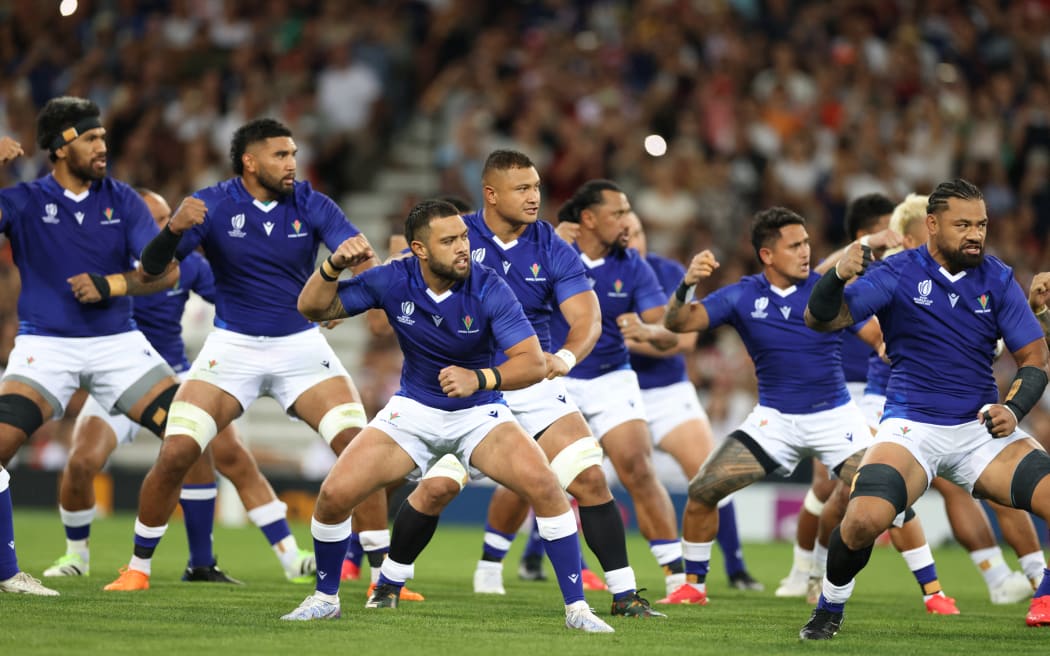
Samoa's players perform the Siva Tau ahead of the France 2023 Rugby World Cup Pool D match between Japan and Samoa at the Stadium de Toulouse in Toulouse, France. Photo: AFP
Observations
All three teams played the same style of rugby.
Their forward packs have improved significantly and were able to stand their own in the set pieces, winning scrums and sometimes pushing their opposition backwards, taking the lineouts, and getting efficient in the battle for possession at the breakdowns.
With space given to them at different matches they were able to throw the ball around, effectively playing quick rucks and running the ball wide. Some great tries were scored as a result.
But with lack of pressure rugby preparation like their Tier 1 opponents had over since 2019, the teams were found wanting at critical times.
Knock-ons, giving away soft penalties and losing possession at the breakdowns happened too often.
It was something all three Pasifika coaches Simon Raiwalui of Fiji, Kefu and Vaovasamanuia Mapusua attributed to the lack of game time against quality opposition.
All three agreed that if their players were given the opportunity to be playing tough, pressure rugby consistently, they would be much better.
In other words, they want the teams to either play in the Rugby Championships against New Zealand, Australia, Argentina and South Africa.
Or get Test matches against the Tier 1 teams annually.
While Tier 1 teams, like New Zealand and Australia, get to play at least 10 top competitive games against each other and teams like South Africa, Argentina, England, France, Scotland, Wales and Ireland, the Pacific three get three games each at the Pacific Nations Cup - and if they are lucky to have three more but only if they have November tours of the Northern hemisphere.
In France, the contrast of how many Test matches a Pacific-based player has against those from their Tier 1 opponents were in stark contrast; a Pacific Island nation player would have maybe 25 Test matches in a span of 10 years. Meanwhile, their Tier 1 counterparts would have played close to 60 Test matches around the same time period.
Those differences matter and it plays out on the field.
A shining example was during the Fiji vs England and Tonga vs South Africa clashes.
Fiji and Tonga had players who on average had played four Test matches each against players who had played on average 10 Test matches each for England and South Africa.
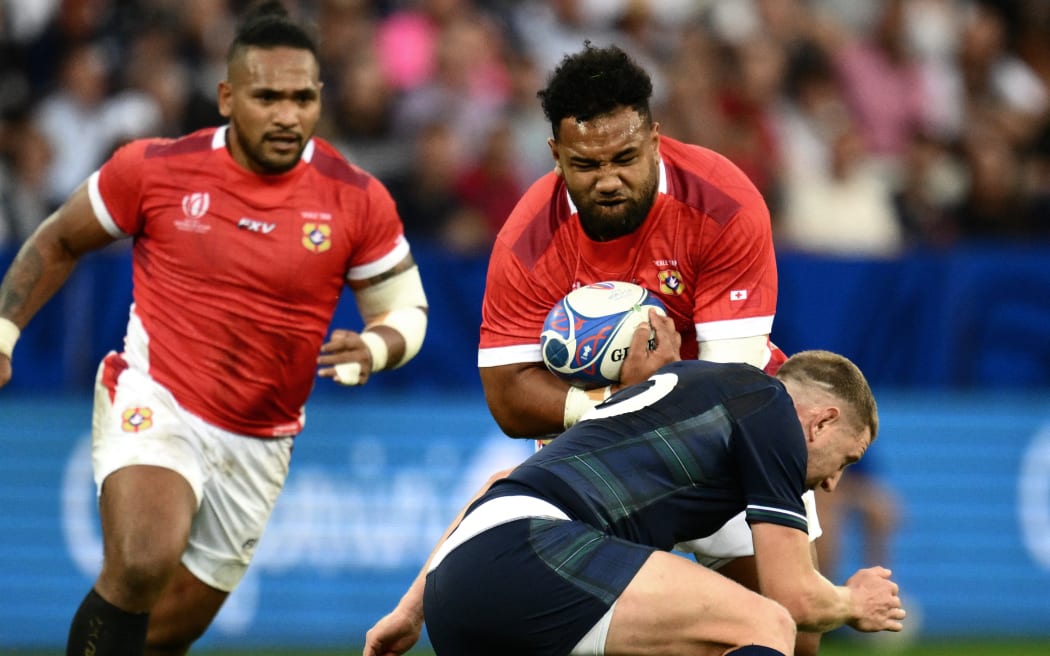
Photo: AFP / CHRISTOPHE SIMON
What needs to be done
While there have been calls for the Pasifika teams to be included in Tier 1, the truth is that we need to get our houses in order first.
Critical is the management of our respective home unions - our national rugby bodies.
There is no hiding the fact that the Fiji, Samoa and Tonga rugby unions are in dire need of management re-alignment and restructuring that will see them being transparent and legally responsible.
Fiji Rugby Union (FRU) is out of the World Rugby Council presently after the current coalition government stepped in to re-set its legality and get the system in order.
FRU Trustees Board chairman Peter Mazey announced that his team found out more than FJ$3.5 million in debt - they have now been able to pay off $1m of that from sponsors that have signed up.
Lakapi Samoa has had their share of negativity which also saw them undergo similar situations as Fiji.
Tonga Rugby Union (TRU) is not far behind either - maybe suffering more from the issue following past mismanagement, which saw businesses lose interest in supporting the oval ball game in the Kingdom.
Players in all three countries had complained of non-payments as per agreed terms with their respective unions.
Tongan players this week took to social media to complain about non-payments from the TRU - the union has since responded saying there were issues they are dealing with to ensure all get their dues.
Fijiana women's rugby reps did the same some a few months back for the non-payment of their allowances that have since been dealt with by the new FRU Trustees Board.
So, it is critical that the management of local national unions in the three nations are done to the likings and requirements of World Rugby.
Only once that is done can the aspirations to climb and to be considered for Tier 1 become a reality.
Japan Rugby is one good example where World Rugby had recognised their set-up and included them in more competitive game calendars.
That would also lead to more funding opportunities and the securing of more top-tier games.
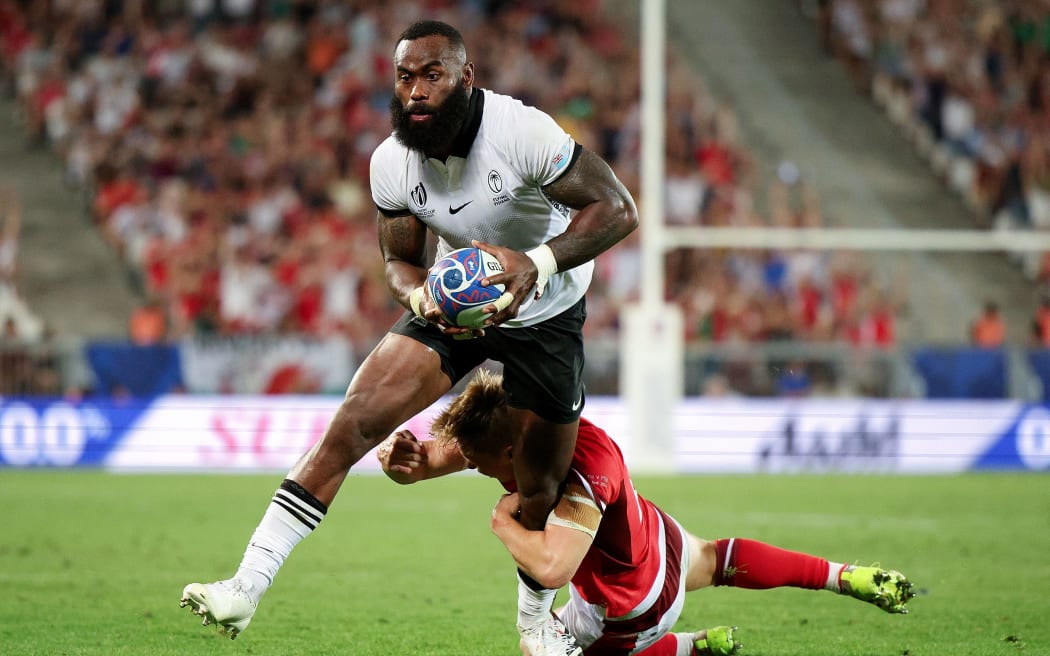
Semi Radradra of Fiji is tackled by Sam Costelow of Wales during the Rugby World Cup France 2023 match between Wales and Fiji at Nouveau Stade de Bordeaux on September 10, 2023 in Bordeaux, France. Photo: Adam Pretty - World Rugby/World Rugby via Getty Images
World Rugby say
World Rugby chief executive officer Alan Gilpin told RNZ Pacific in France that World Rugby's mission is to broaden the reach, accessibility and relevance of rugby worldwide.
This includes an ongoing commitment to increasing the competitiveness of the game with all playing nations and those who can challenge for future qualification.
He said what World Ruby has witnessed so far has been amazing for the game.
World Rugby have invested more than £40 million teams not in The Rugby Championship and Six Nations to get teams to the start line.
This has been in technical coaching support, fixture and logistics support, but also years of investment in the likes of Moana Pasifika, Fijian Drua, Black Lion (Georgia) and Penerol (Uruguay) to build the competitive base.
"We continue to be in dialogue with the game's stakeholders regarding the competition and calendar model beyond Rugby World Cup 2023, including the establishment of a two division Nations Cup and consideration to an expanded Rugby World Cup, that will continue to increase opportunity for all and ultimately advance global competitiveness, which in turn increases interest and investment," Gilpin said.
That is the future as World Rugby sees the growth and the need for them to be relevant. The following have also been confirmed, through a joint statement from SANZAAR and Six Nations Rugby:
- SANZAAR and Six Nations Rugby are working in partnership to establish a new international rugby competition due to start in 2026
- The new competition will take place in the existing July and November international rugby windows
- Each of the four SANZAAR nations and all of the Six Nations Rugby Unions and Federations will compete in the competition, with two invitational Unions to join the SANZAAR nations
- SANZAAR and Six Nations Rugby will own and operate the elite competition
- World Rugby will create a newly formed second-tier competition, to facilitate promotion and relegation from 2030
SANZAAR and Six Nations Rugby are working in partnership, alongside global rugby stakeholders, to have new international rugby competition that will be played in the existing July and November Test windows.
The creation of the new competition has been a collective process from the sport, including World Rugby, unions, key leagues, competitions, and crucially, the International Rugby Players.
Set to begin in 2026, the new elite competition will feature each of the four SANZAAR Rugby Championship teams (Argentina, Australia, New Zealand and South Africa) and the Six Nations Rugby sides (England, France, Ireland, Italy, Scotland and Wales).
Two spaces have been reserved for invitational Unions to join the SANZAAR teams. A transparent selection process will be managed by SANZAAR, supported by World Rugby and the International Rugby Players, to determine these two invitational unions.
Owned and operated by SANZAAR and Six Nations Rugby, the elite competition will take place in alternating years, outside of the British & Irish Lions Tours and Rugby World Cup.
To strengthen the development pathway for emerging nations, World Rugby will create a second-tier competition that will feature teams from Europe and the rest of the world, with SANZAAR and Six Nations Rugby actively involved in cementing the link between the two divisions.
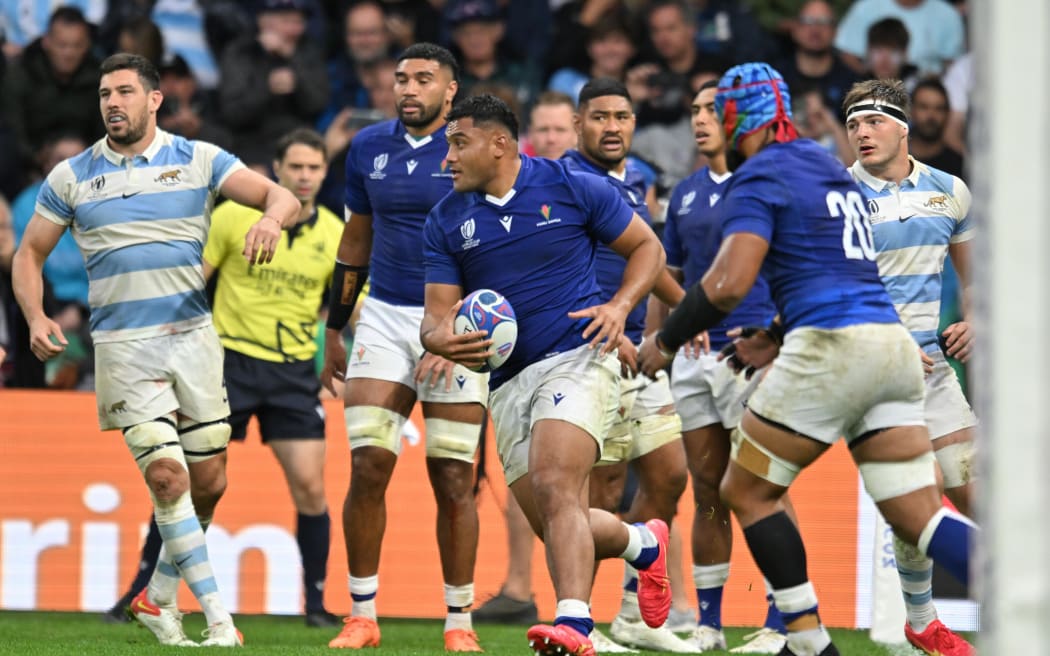
Sama Malolo of Samoa in action against Argentina at the 2023 Rugby World Cup. Photo: PHOTOSPORT
Establishing the two competitions will pave the way for promotion and relegation matches, contributing towards a valuable pathway for teams, and will support ambitions to sustain and grow the global game.
The introduction of the new elite international competition is testament to the strong ambition across all parties, motivated by delivering context and a stronger narrative around the July and November windows, that can excite players and bring new fans to the game.
World Rugby says having an expanded Rugby World Cup could be in place by 2030 - probably along the same line as the Under-20 championship currently being used, one for Tier One and the other for Tier Two.
That will have a promotion/relegation system where bottom placed teams in Tier One get relegated and top teams from Tier Two get promoted.
While the Rugby World Cup semi-finals in France this weekend will yet again only feature Tier One teams, there are hopes that come 2027 in Australia at least one Tier Two team will be in the last four.
That will depend mainly on how much work is done between now and then to create a more level playing field.

